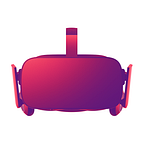Why You Should Quit Your Job to Design for VR
This week we had a local design school (hello VFS!) come by to take a tour of our office. Hammer & Tusk is part of a parent company called Axiom Zen. Axiom Zen both builds companies and works with large brands as an innovation studio, so our projects range from creating match three games to designing user interfaces for WiFi solutions. The students sat down with two of our designers to chat about the projects we’re currently working on. After the formal presentation, they started asking questions, and those questions were thoughtful, intelligent, and well-reasoned.
And the subject? 90% of them wanted to know about VR.
That’s not just because VR is the sexy new thing. That’s a factor, of course, and the projects Hammer & Tusk has going on right now are pretty exciting. Most of them are also in stealth mode, so I won’t be that person and tell you all about how cool we are but oh, I can’t explain why. Instead, let’s focus on the other element in the equation. When one of the designers mentioned to me afterwards how focused they were on VR, I shrugged.
“I mean, as a designer it is pretty damn exciting. How often do you get to define UX best practices?”
How many fields can you enter where you are literally shaping interactions for generations to come? In the early days of religious manuscripts, someone was the first scribe to range all of the lettering left, and to use variations in letter size for emphasis. Whoever he was is long forgotten, but every text we read now embraces those grids and columns!
Imagine being the very first film director to use an establishing shot. (That’s where they show you a large location, like the outside of the building, and then show a direct location, like people inside the building, and you understand that those people are inside that building.) In modern film it’s so common we hardly notice it happening; think of how many episodes of sitcoms open with a shot of the apartment complex, or the coffee shop. But someone was the first to come up with that as a quick way to let the audience know where the scene was taking place, and his name was D.W. Griffith. He probably had no idea he was creating what would become a standard industry shorthand.
That is the era virtual and augmented reality are in now. The shorthands that will define the genre (touchable icons for smartphones, desktops for computers, that touching an X closes it for every electronic ever) are still unwritten, and the opportunity to create those shorthands is intoxicating.
So far, VR hasn’t been all that creative when it comes to taking advantage of their new options. Stick your hand in something to activate it. Point over there to teleport over there. Bob your head to create facial expressions. We have a lot more room to grow, and this generation of curious minds are the VR designers of tomorrow. The ones who will be remembered, like D.W. Griffith, forever.
So maybe you don’t want to quit your job as a designer. But maybe, just maybe. You do.
—
written by Wren Handman for Hammer & Tusk.
